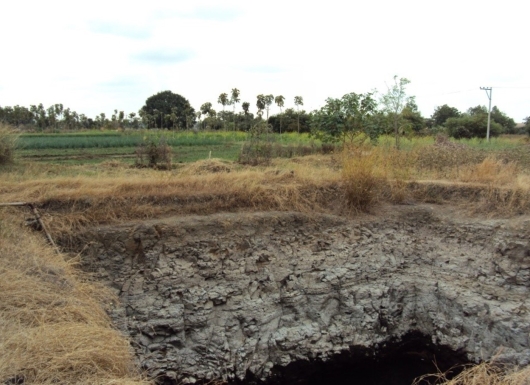Submitter: (ICRISAT)
Crop-water-climate modeling forms a central component of ICRISAT’s approach to resource quantification and optimization. Using tools such as SWAT, HYDRUS, WIC, APSIM, DSSAT, etc, the institute evaluates scenarios for water use, climate adaptation, and crop productivity across different management options. These models enable the development of customized recommendations for maximizing yields while ensuring sustainable resource use, especially under climate variability and water stress conditions. By leveraging real-time weather data, soil moisture conditions, crop types, and phenological stages, modelling framework enables precision agriculture and evidence-based policymaking. It also incorporates future climate scenarios using projections from the Coupled Model Intercomparison Projects (CMIP5 and CMIP6) to estimate shifts in agricultural water demands. This integrated modelling framework equips stakeholders farmers, irrigation planners, and policymakers with actionable insights to optimize yields, conserve water, and enhance climate resilience.

The research demonstrates the robustness and applicability of crop-water-climate modelling frameworks in enhancing water resource management and agricultural planning under climate uncertainty;
Collectively, these studies validate the effectiveness of advanced modelling techniques in quantifying water resources, reducing uncertainty, and strengthening agricultural resilience. They also provide a foundation for scaling up these approaches to other river basins and agro-ecological zones, with demonstrated utility in both research and operational contexts.
The crop-water-climate modelling system is highly scalable due to its modular architecture and cloud-based platforms. It can be deployed from local farm-level applications to regional and national-scale planning. Scalability is further supported by advances in remote sensing, AI, and cloud computing, allowing the model to handle diverse datasets and large geographical areas.
Kaushal K Garg, kaushal.garg@icrisat.org
Venkataradha A Venkataradha.akuraju@icrisat.org
Pranuthi Gogumalla: pranuthi.gogumalla@icrisat.org
Debi Prasad Sahoo, debiprasad.sahoo@icrisat.org
Aiendrila Dey, aiendriladey09@gmail.com